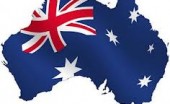Molly Minturn - My family is heartbroken to share that my father died in surgery on Monday, Feb. 10. It…
The Arctic October 2023 –
Written by Diana Thebaud Nicholson // March 26, 2025 // Arctic and Antarctic // Comments Off on The Arctic October 2023 –
Nordic Conference in Development Economics – NCDE 2025
17-18 June 2025
26 March
JD VANCE HEADS TO GREENLAND WITH BAGGAGE — EMOTIONAL, DIPLOMATIC, AND POSSIBLY UPHOLSTERED
Vice President JD Vance is heading to Greenland this Friday, March 28 — his first visit to the remote island, and arguably the most awkward diplomatic excursion since Napoleon tried to negotiate from a bathtub. On paper, it’s about Arctic security. In reality, it’s about damage control, cold fronts — literal and ideological — and one man’s pathological beef with comfort.
Vance’s arrival comes after weeks of controversy: a leaked Signal group chat where he admitted, “I just hate bailing Europe out again,” a spiraling relationship with NATO, a history of anti-LGBTQ+ policies, and a growing sense in European capitals that the U.S. Vice President isn’t just ignoring their values — he’s actively trying to bulldoze them.
Now he’s flying to Greenland, a strategic hub between the U.S. and Europe, accompanied by Second Lady Usha Vance. The itinerary has been scrubbed down to avoid direct contact with Greenlandic citizens,
That’s why his resentment toward Europe burns so hot. It’s not about military budgets. It’s about Europe’s refusal to apologize for being pluralistic, postmodern, and sometimes just plain comfortable in its own damn skin
Battle is hotting up for control of the Arctic
Rapid warming in the high north has made Greenland a valuable prize for China and the United States
(The Times) … America makes its case by pointing to the spread of Chinese espionage operations in the Arctic. China sniffed around the high north long before global warming caught on. In 2001 it raised the red flag of the People’s Republic in Svalbard and established an Arctic research centre. By 2013 it had won official observer status with the Arctic Council. Now it hoovers up all planning and strategy papers and spies on technical improvements in ice-breaking vessels and underwater cable security.
Western intelligence agencies have seen Chinese espionage activity keep pace with the warming of the seas. Chinese ocean-going ships are on the increase; so is spoofing of military GPS in the region. Alaska has become a big target. Fake tourists equipped with surveillance drones have been detained in Anchorage. Their targets: three military bases that can provide information about US nuclear defences and planning for the multinational Northern Edge war games. Spy balloons have hovered over Canada. Chinese fishing fleets steer further north towards Alaska.
… It tried to buy a Danish naval base on the island via a Hong Kong company in 2016. Two years later, it bid to extend runways at Greenland’s airports. Both were blocked by Copenhagen. The Greenland home rule government, while keen for Chinese investment, is suspicious of the environmental damage created by their mining companies.
23-26 March
Denmark welcomes US plan to scale back unsolicited Greenland visit
Delegation originally meant to visit the capital will now have a trip only to the island’s US military base
The White House has not yet confirmed whether or not Waltz, who has since become embroiled in an embarrassing security leak, will still be travelling. His name was omitted from a list of those attending.
“I actually think it is very positive that the Americans are cancelling their visit to the Greenlandic community. Then they will instead make a visit to their own base, Pituffik, and we have nothing against that,” [Danish foreign minister, Lars Løkke] Rasmussen told the Danish broadcaster DR.
Rasmussen was speaking on Wednesday, as US planes were preparing to take off from Nuuk airport after reportedly being loaded with bulletproof cars that had been delivered in preparation for the visit.
“The short of it is that the cars that were delivered a few days ago are now being brought back home, and there will be no visit from the US vice-president’s wife and their security adviser to the Greenlandic community. It is being packed up, and that is positive,” Rasmussen said.
‘We have to have it’: Trump ups the pressure on Greenland
(Politico) His statement comes as top U.S. officials plan a controversial visit to Greenland, which Danish officials see as part of an intense pressure campaign.
President Donald Trump is tightening his grip on Greenland, as Vice President JD Vance prepares for a last-minute, uninvited visit later this week.
America has “to let them know that we need Greenland for international safety and security. We need it. We have to have it,” Trump said in an interview with radio host Vince Coglianese on Wednesday. “It’s [an] island from a defensive posture and even offensive posture is something we need. … When you look at the ships going up their shore by the hundreds, it’s a busy place.”
Greenland Officials Express Fury Over Trump’s Plan to Send Delegation
Usha Vance, the second lady, and Michael Waltz, the national security adviser, are on their way this week. Greenlandic officials called the move “aggressive.”
18 March
Carney ‘gets it,’ Obed says after meeting with new PM
Inuit leaders optimistic about future of Indigenous-Crown relationship after prime minister visits Iqaluit
“We’ve talked a lot as Inuit about the Inuit-Crown relationship, and our modern treaties really are the basis for Canadian sovereignty,” Obed, whose national organization represents Inuit in Canada, said in an interview with Nunatsiaq News.
“And a prime minister acknowledging that and saying he went to France, to Britain, and now to the Canadian Arctic as the three pillars of the foundation of this country, shows that he gets it.”
Obed said, “He is stepping right in in a leadership role in a time of urgency and crisis and recognizing Inuit Nunangat for what it is — it’s an essential part of the country, and the Inuit and Inuit self-determination are a key component to team Canada.”
2024
17 October
NATO pushes Arctic space plan to counter Putin
Transatlantic alliance wants to ensure it’s not losing to Russia in space or the far north.
(Politico) The NATO alliance launched plans to develop a military-grade satellite communications network on Thursday for the Arctic, aimed at bolstering defense against a belligerent Russia in the north.
On the sidelines of a meeting of NATO’s defense ministers in Brussels, a bloc of 13 countries agreed to push forward the Northlink initiative to build out space-based communication systems across the Arctic using existing commercial satellites.
The plan involves “leveraging services from communication satellite constellations” to offer up a reliable “multinational communications network for the Arctic,” NATO said.
NATO doesn’t operate its own satellites but after space was declared the alliance’s fifth theater of conflict in 2018, a dedicated space command center was opened at Germany’s Ramstein air base the following year.
Russia, which also borders the Arctic, has ramped up its operations in the region of late with warnings of jamming attacks on satellites in the area.
Denmark, Canada, Iceland, Norway and the United States all control Arctic territory and are NATO member countries, along with Sweden and Finland which recently signed up to the alliance.
2 October
In new letter to White House, senators drill down for info on ICE Pact
The letter, signed by Sens. Chris Murphy, Cindy Hyde-Smith and Patty Murray, calls the new security agreement “critical” and warns of Chinese investments in high north capabilities.”
The new letter, signed by Sen. Chris Murphy, D-Conn.; Sen. Patty Murray, D-Wash.; and Sen. Cindy Hyde-Smith, R-Miss., applauded the security agreement announced earlier this summer during the NATO Summit in Washington, DC. The need for cooperation on the construction of heavy icebreakers capable of freely navigating the High North is particularly urgent given increasing Russian and Chinese activities in the region, the senators wrote.
“In response to the changing physical environment and growing international pressure following its invasion of Ukraine, Russia has significantly built up its military footprint in the Arctic and re-opened several Soviet-era military bases,” according to the letter. “China, often in close coordination with Russia, has made critical investments to enable exploitation of natural resources above the Arctic Circle.”
The senators also cited the three dozen icebreaking ships in Russia’s fleet compared to the United States’ two operational icebreakers .
30 August
Canada, Finland and U.S. announce ICE Pact
(The Watch) Canada, Finland and the United States announced a partnership dubbed the ICE Pact to produce much-needed icebreakers for use in rapidly melting Arctic waters. The July 2024 pact was revealed during the NATO summit in Washington, D.C., and was framed as a way to boost shipbuilding capacity in each country. The agreement is also widely seen as a counter to the People’s Republic of China (PRC) and Russia, whose icebreaker fleets and production capabilities have drawn attention in the West.
By the end of 2024, the three nations will enter a formal understanding on how to best proceed with icebreaker production, according to a joint statement. Bollinger Shipyards in Louisiana will be the building site of future U.S. icebreakers, stated a news release from the White House. “Under this trilateral arrangement, Canadian, Finnish, and American capacity and know-how for building polar icebreakers will help deliver a fleet of new polar icebreakers for ourselves, our allies, and other partners,” the statement read.
The U.S. Coast Guard currently has three icebreakers and several more under order. The ICE Pact will aid allied, democratic nations in improving their shipbuilding capacity while countering PRC and Russian moves in the Arctic, National Security Advisor Jake Sullivan told reporters on the sidelines of the NATO Summit in Washington, D.C, according to Defense One, a military affairs website.
28 August
Ambitious Goals Will Help The New Maritime ICE Pact Come Alive
(Forbes) Over the next few weeks, diplomats from Canada, the United States and Finland will be hard at work, negotiating terms of a brand-new Icebreaker Collaboration Effort, or “ICE Pact.” Transforming airy diplomatic language into a concrete set of real obligations is a challenge, and a big, ambitious goal—a type of Polar Region moonshot—can help focus discussions. It is what the three democracies need to towards secure a better future for both the Arctic Region and the massive Antarctic continent.
17 March
How Ukraine war and sanctions on Russia put Arctic cooperation on ice
After two years of frosty relations and a stalled LNG project in the wake of Russia’s invasion of Ukraine, there is sign of a thaw amid pressing climate concerns: Arctic Council working group meetings are resuming virtually
Nong Hong, executive director and senior fellow at the Institute for China-America Studies in Washington, US, and a research fellow at the China Institute, University of Alberta, Canada
(SCMP) Last month, the Arctic Council broke the ice by agreeing to reconvene its working group meetings virtually, nearly two years after seven of its eight members, including the US, halted participation in protest against the invasion of Ukraine by Russia, which held the council chairmanship then.
The working groups had been relying on “written procedures” for the last six months, after Norway took over the chairmanship and found ways to resume project work.
While Russia has not yet considered withdrawing from the Arctic Council, it has suspended its annual payments to it.
Amid Russia’s unpredictability, Greenland is seeking stronger ties with the United States and Canada, and pushing to establish a high-level Arctic-North American forum that would include leaders from all the indigenous territories. Meanwhile, US troops stationed in Alaska, redesignated as the Arctic division in 2022, are developing as an Arctic force and collaborating with Norway, Canada, Finland and Sweden in joint exercises.
Despite the geopolitical and economic shifts, however, scientific cooperation in the Arctic remains one of the few areas where the international community shares more common concerns than divergent views.
There is a long tradition of scientific collaboration between nations in this region, and the conflict in Ukraine has presented a unique challenge for climate researchers and scientists. Official Arctic Council meetings have been paused since May 2022 and with that, scientific cooperation among the eight Arctic states at the institutional level.
The Arctic Council’s resumption of project-level work is both significant and timely, and will help the council to fulfil its mandate as the leading and permanent forum for Arctic governance. The effectiveness of the Arctic Council’s working groups in tackling environmental, climatic and social development issues is also vital for the welfare of the Arctic communities.
23 February
Greenland Unveils New Arctic Strategy
(High North News) Greenland’s government, Naalakkersuisut, has announced a new foreign relations, security, and defence strategy for 2024-2033. The strategy identifies closer links between Greenland and Arctic areas in North America as a priority. These include Alaska—which the strategic document sees as an inspiration in education and the mineral sector—and the Canadian Arctic territories and regions of the Yukon, Northwest Territories, Nunavut, and Nunavik. The government proposes the establishment of a new forum, the Arctic North American Forum, and aims to strengthen cooperation with Iceland, emphasizing the importance of maintaining the Arctic as a low-tension area.
21 February
A China-Russia Arctic Alliance? Not So Fast.
Despite lofty declarations of mutual interests in the Arctic, there have been significant cracks in this regional relationship.
(The Diplomat) With the Arctic finding itself under ever greater global scrutiny due to climate change, and opening up to increased economic activities, from shipping to mining to fishing, the question of whether great power competition is spilling over into the far north has assumed greater importance. One aspect of this attention has been the idea of a probable, and perhaps even inevitable, Arctic pact between China and Russia, one based on mutual northern interests and shared mistrust of the West.
At first glance, there is much evidence to support this view, especially with Beijing declining to condemn the Russian invasion of Ukraine, and instead adopting a nebulous policy of neutrality toward the conflict. China and Russia are both pushing back against what they perceive as NATO militarism and expansionism in the Arctic. The Polar Silk Road, which the two states began to jointly develop after 2017, was meant to further enhance Sino-Russian boreal cooperation, centering on the Northern Sea Route connecting Asia and Europe via the waters abutting Siberia.
2023
14 November
China’s Polar Silk Road: Long Game or Failed Strategy?
By Erdem Lamazhapov, Iselin Stensdal and Gørild Heggelund
(Arctic Institute) The events of 2022 proved to be a year of great geopolitical changes. In February 2022, just days before Vladimir Putin launched his full-scale invasion of Ukraine, Xi Jinping and Putin met in Beijing, where they discussed among other things the development of the Polar Silk Road (PSR) The PSR was jointly announced in 2017) The Arctic was declared as a potential area of cooperation between the two countries, and the PSR was considered by some as the fulcrum of the Russo-Chinese cooperation. In March 2023, a year after the previous visit, Xi Jinping again visited Russia, marking China’s continued commitment as Russia’s partner – albeit not a partnership without limits. As Russia indicated a strong desire for China’s presence in the Arctic, the PSR has largely disappeared from the official Chinese discourse, raising more questions about China’s long-term intentions with its Arctic policy and its wider strategic approach to the global order. Has the PSR failed, or are we merely witnessing a hurdle for China’s long-term strategy in the Arctic?
19-21 October
2023 Arctic Circle Assembly
The Arctic Circle Assembly is the largest annual international gathering on the Arctic, attended by more than 2000 participants from over 60 countries. The Assembly is held every October in Harpa Concert Hall and Conference Center, Reykjavík, Iceland.
The 2023 Assembly Program
More than 700 speakers in over 200 Sessions will participate in the 2023 Arctic Circle Assembly
The Arctic Convenes in a Restless World
(High North News) Reykjavik – In an unclear geopolitical landscape, Arctic leaders, researchers, and indigenous peoples meet in Reykjavik to create clarity and form alliances. Russia is taking greater risks with nuclear fuel, and we are taking a closer look at the ghost of depopulation.
Over 2000 people convened in Reykjavik, Iceland, for the tenth Arctic Circle conference from Thursday to Saturday. Renewable energy, cooperation, Russia, China, and geopolitics are topics on the agenda. To name a few.
That is to say, there were supposed to be over 2,000, but many of those who had their name on the program had to capitulate for Iceland’s legendary wind. All flights to the island were canceled on the opening day, and ships could not dock.
Such is life in the North. Journalist Astri Edvardsen and I had luckily landed before the storm.
The Arctic Council was one of the dominating topics of discussion on Thursday, and Norway’s handling of the takeover of the chairship from Russia was praised.
The climate crisis was also in focus. The United Arab Emirates Special Envoy for Climate and COP 28 President believes that the Arctic is the frontline for climate change.
We also learned more about nuclear power while in Iceland. Some calling it a “Nuclear renaissance”.
And speaking of nuclear power: Just weeks after sending crude oil on non-ice class tankers through the Arctic, Russian authorities shipped nuclear fuel across the Northern Sea Route on a cargo ship not specialized in transporting nuclear fuel.
19 October
Rising temps and tensions in the Arctic
As leaders convene in Reykjavik, Iceland, for the Arctic Circle Assembly, geopolitical tensions are rising as fast as the Arctic’s sea level.
(GZERO media) Historically, Arctic diplomacy has been shielded from external matters. But melting sea ice is opening up new military, trade, and extraction opportunities up north, pitting NATO Arctic countries against China and Russia, which have been proactively showing dominance in the region.
China’s Arctic presence is focused on resource extraction and faster shipping routes to Europe. It has teamed up with Russia, which chairs the Arctic Coast Guard and has begun operating joint military vessels off the coast of Alaska.
Since invading Ukraine, Russia has been withdrawing from intergovernmental bodies in the Arctic, including the Nuclear Arctic Safety Program and the Barent Euro-Arctic Council. Representatives at this week’s meeting are expected to decide the future of the most important Arctic institution, the Arctic Council. The US has pushed to reintegrate Russia into the forum, but other NATO members have been unwilling to include Russia in since its invasion.
The Graphic Truth: Shipping volume through the Russian Arctic
Climate change has opened Arctic shipping channels that can be navigated by freighters without icebreakers for several months a year – and year-round with icebreakers. Canada and Russia dominate the region, but Moscow is much more aggressively exploiting the economic opportunities there.
Taking the high-latitude route over Russia can shave 5,600 miles off a voyage from Europe to China, and as sea ice melt accelerates, the economic viability grows. Total shipping volumes along the Arctic route rose steadily between 2019 and 2020, and immediately after Russia invaded Ukraine, despite the frigid March conditions, the Arctic corridor saw its highest-ever volume of shipping in 2022.
Canada and the United States, meanwhile, have faced criticism for underinvestment in Arctic security. Canada, for example, lacks sufficient early warning systems to detect missile attacks coming over the North Pole — which is dangerous, given that the Arctic is essentially split between Russia and NATO countries.
16 October
Russia Sends Nuclear Fuel Across Arctic on Ship with History of Safety Violations
Weeks after sending crude oil on non-ice class tankers through the Arctic, Russian authorities shipped nuclear fuel across the Northern Sea Route on a cargo ship not specialized in the transport of nuclear fuel. Ship records also show a host of safety deficiencies during past inspections. The nuclear fuel traveled from Murmansk to Pevek to resupply the floating nuclear power plant Akademik Lomonosov.



